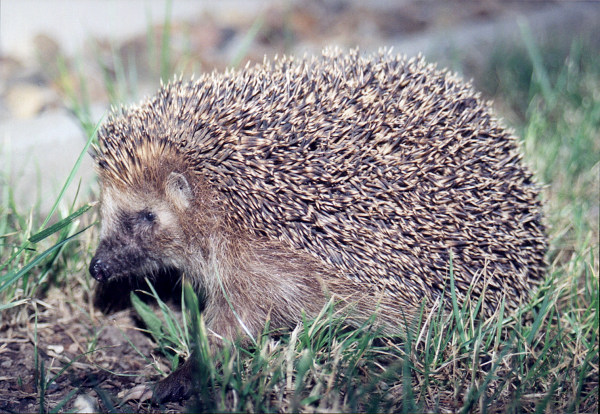| 새로운 사진 | 신문속의 동물소식 | 신기한 동물이야기 | 동물의 소리 | 동물동화상 | 사진 올리기 | 사진 저작권 | English |
|---|
| 재미있는 동물사진 | 괴수/괴어/엽기 동물사진 | 동물이름사전 | 동물목록 | 바깥고리 | 창고입구 | 똑똑누리집 |
|---|
| 이미지 정보 | Original File Name: Igel01-West European Hedgehog (Erinaceus europaeus).jpg Resolution: 600x414 File Size: 134518 Bytes Upload Time: 2007:10:29 10:40:13 | |
| 올린이 | 이름 (메일주소): Unknown | |
| 사진 제목 | West European Hedgehog (Erinaceus europaeus) - Wiki | |
 |
| Email : 카드 | 올린이 | 운영자 사진삭제 정보수정 Admin |
| 설명 | West European Hedgehog (Erinaceus europaeus) - Wiki
West European Hedgehog
The West European Hedgehog (Erinaceus europaeus), or simply the European hedgehog, is a hedgehog species found throughout the Palaearctic region, except in the Himalayas and North Africa. It is not commonly found above 60°N in latitude, except for Finland, Sweden and the Northwestern-most parts of Russia. This hedgehog is about 20 cm in length, and lives in woodland, farmland, and suburban areas. It is nocturnal, and if alarmed will roll itself into a ball, protecting itself against potential predators with its spines. Unlike the smaller, warmer climate species, the West European Hedgehog may hibernate in the winter. It is omnivorous, feeding on a wide range of invertebrates, but preferring slugs, earthworms, beetles and other insects. The preferred arthropods are the millipedes Glomeris marginata and Tachypodoiulus niger as well as the ground beetle Carabus nemoralis. It is also known to eat frogs, small rodents, young birds and birds' eggs. This species has become a serious pest in the Western Isles of Scotland, where introduced hedgehogs eat the eggs of ground-nesting waders such as Snipe, Dunlin, Redshank and Lapwing. It is also considered a pest in New Zealand where it preys upon the native giant snails (Powelliphanta), weta, and various other native invertebrates Blonde hedgehogs have a rare recessive gene giving rise to beady, button-black eyes and attractive creamy-coloured spines; they are not strictly speaking albino. They are extremely rare except on the Channel Island of Alderney and are nicknamed "Alderney Spike Girls". A population of around a thousand is believed to exist. They allegedly carry no fleas, and are a localised island variant of Erinaceus europaeus. A low coverage assembly of the genome of Erinaceus europaeus was released by the Broad Institute in June 2006 as part of the Mammalian Genome Project. Protection list On august 28, 2007, the new Biodiversity Action Plan (BAP) [launched in 1997] included the West European Hedgehog on the list of species and habitats in the UK that need conservation and greater protection. http://en.wikipedia.org/wiki/West_European_Hedgehog
| |||
| 저작권 정보 | 사진의 저작권은 원저작자에게 있습니다. 동물그림창고는 동물관련 사진을 전시할 수 있는 공간만을 제공합니다.사진을 사용하고자 할 경우에는 저작권자와 협의하시기 바랍니다. |
|
|
|
| |||||||
| CopyLeft © since 1995, 동물그림창고. All rights may be reserved. | ||||||||
Stats